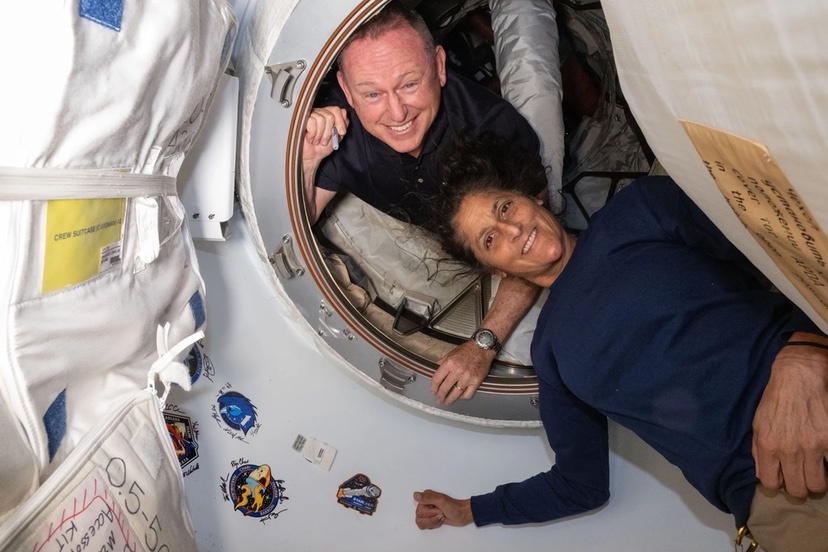Photo: NASA’s Boeing Crew Flight Test astronauts (from top) Butch Wilmore and Suni Williams pose for a portrait inside the vestibule between the forward port on the International Space Station’s Harmony module and Boeing’s Starliner spacecraft. NASA photo.
Would you climb aboard a Boeing airplane if they told you your odds of making it home alive were 1-in-270?
Apparently, those are the odds NASA considers an acceptable “LOC” projection for a trip to the International Space Station (ISS) and back. That’s a “Lost Of Crew” projection, for readers not familiar with the acronym.
And I guess the pilot and commander of the June 5 Boeing Starliner spacecraft — Suni Williams and Butch Wilmore — also found those to be acceptable odds.
You have to be something of a gambler to fly with Boeing these days.
Wilmore and Williams left Earth on June 5, planning for an eight-day test flight of Boeing’s new Starliner spacecraft, with a brief ISS stay to certify the ship for future missions — a much-needed option, according to NASA, should SpaceX’s Crew Dragon spacecraft ever has to go offline. The Crew Dragon has been serving as the ISS ferry since 2020.
Even before the Boeing craft reached the ISS, five of its thrusters began misfiring. The supply of a gaseous helium that keeps the thrusters pressurized sprang five leaks. Wilmore and Williams made it to the station intact, but their eight-day mission has now stretched into ten weeks.
Ten weeks of looking out the window at the useless (or maybe just dangerous) Starliner. How depressing.

I don’t know. Does this space vehicle — which has now been deemed unsafe to drive — look like something that cost the taxpayers $5.7 billion?
The Daily Post ran an article a few days ago about a new “lemon law” that went into effect on August 8. According to Colorado Attorney General Phil Weiser, “If you’re in the market for a new vehicle, you can breathe a little easier knowing you now have more protections against buying a lemon. And if you’re buying used, you now have more information and negotiating power if you want to buy a ‘lemon buyback’ vehicle from a dealer.”
But this law applies only in Colorado. If you’re flying a Boeing Starliner into orbit, you’re on your own.
Last week, NASA revealed an extreme contingency plan that would involve flying the Starliner home empty. The batteries on the $5.7 billion spacecraft were intended to last only six weeks. So they’re getting recharged by the ISS. But no one is recharging the ISS.
If the contingency plan is adopted, a SpaceX Crew Dragon spacecraft intended to carry four people for a five-month ISS stay, beginning in September, would instead be launched with just a crew of two, leaving two seats empty to bring Williams and Wilmore home in February. Just one little problem. Williams is 58 years old, and Wilmore is 61. And the human body loses maybe 2% of its bone density per month, due to the absence of gravity. Our two brave, but somewhat older, space gamblers apparently stand to lose 12% of their bone density if NASA makes them spend six months at the ISS.
I normally wouldn’t have been tempted to write about this unfortunate situation — I prefer to write about happier things, like drug addiction and presidential elections.
But then I saw a picture of Wilmore and Williams in a news article.

At first glance, I saw two happy astronauts — a man and a woman — getting ready to board their spacecraft.
Then I noticed the roses in Butch Wilmore’s right hand.
And I thought to myself… Heck, this whole thing was planned in advance, as a secret rendezvous.
A six month stay, in a luxury hotel in space.
Who can say how long the smell of roses will linger in the ISS?
Of course, I’m just being romantic. I really have no idea if you can even smell roses in space. But I like to think you can.

